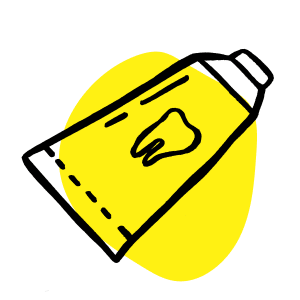What is
Gum Disease?
What is Gum Disease?
Everything you need to know about the cause and treatment of gum disease.
Along with tooth decay, gum disease is one of the leading causes of tooth loss in the world. The trouble is, this silent and slow-developing chronic disease often goes unnoticed and undiagnosed until it causes irreversible, sometimes painful damage to the bone and overall health of the mouth.
Gum disease contributes not only to the slow decline of the function in the person’s chewing ability – it can also cause potent bad breath, the type that can clear a room, infection and pain, bleeding gums and impact severely on one’s self-esteem and confidence in social situations.
Gum disease is caused by a build-up of hardened bacteria and minerals excreted from the saliva. The gum disease process can be sped up by a diet high in sugar, acid and carbohydrates, smoking, alcohol, medical conditions and medications, and most commonly poor oral health care practices.
Gum disease progresses through four stages from mild to severe. This does not include healthy gums, being the ideal stage for everyone. A patient is deemed from moving from healthy gums to having gum disease when they begin to show signs of inflammation of the gums tissue. This is the first stage of gum disease known as gingivitis.
Been a while since your last clean?
Been a while since your last clean?
Find your new dentist in minutes with upfront quotes for an EXAM & CLEAN
Search, Book and Manage your oral health for FREE, with AirSmile!
How do dentists treat gum disease?
How do dentists treat gum disease?
Find gum disease services, on AirSmile
Since the gum disease infection is both above and below the gum line, a dentist or dental professional must manually remove the build-up of bacteria that has cemented itself to the side of the teeth. To do this, they use a combination of tools and equipment designed specifically to be tough enough to remove the hardened bacteria without causing damage to the surrounding gum and tooth structure underneath. Various handheld instruments and an ultrasonic water scaler are the two most common tools used during a deep teeth cleaning appointment, however, with the advancements in dental equipment powerful air abrasion tools are now also being added to the process of treating gum disease for a more effective and comfortable service.
Why you should visit the
dentist to care for your gums

Maintain function

Keeps the mouth healthy

Continued oral health

Catch things early

Best long-term care

Quick appointments
Why you should visit the
dentist to care for your gums
dentist to care for your gums




stable

investment

Learn more about
gum disease.
Understanding your condition is the
key to making the right choices for you
Gingivitis
Slight periodontal disease
Moderate periodontal disease
Severe or advanced periodontal disease
The cost of treating gum disease is extremely difficult to answer. There are many factors that will contribute to the cost of returning the gums to a healthy and manageable state.
These will include;
- Which dental professional will be performing the treatment ie: Dentist, periodontal specialist or a hygienist or oral health therapist.
- The extent and damage caused by the gum disease
- Time in the chair needed to complete each session of treatment
- The number of appointments needed
- Location of the practice
- Business overheads
As a rough guide, a straightforward routine hygiene appointment will cost between $100 – $200. The cost to treat stage four gum disease with a periodontist could be up to $2000, in severe cases – not including ongoing care to ensure the disease does not return. In short, gum disease treatment can become very expensive. The best news is that it is completely preventable with a simple home care regime and six monthly visits to the dentist for teeth cleaning.
Active gum disease does make the gums inflamed, tender and sensitive to touch. This can make treatment of the disease unpleasant without numbing the area. A dental professional treating gum disease will usually offer an anesthetic in the form of a gel that suspends inside the pocket surrounding the tooth that will numb the gum area for a short time while they work, or for more advanced treatments, a local anesthetic can be administered providing complete numbing of the entire area so you don’t feel a thing.
Gum disease can be easily prevented by brushing twice a day with a manual or electric toothbrush and regular fluoride toothpaste and flossing at least once a day. This regular and manual removal of soft plaque, food debris and minerals in the saliva will prevent the heavy build-up of the hardened bacteria which causes gum disease. However, a good home care routine is often not enough. To ensure gum disease does not occur, it is advised to visit the dentist every six months for professional teeth cleaning and oral hygiene instructions to identify any areas you may be missing. If you follow these two recommendations you will have the best chance of preventing gum disease in your mouth.
In short, no. The treatment of gum disease requires the manual removal of the hardened bacteria and tartar that has cemented itself to the side of the tooth, both above and below the gumline. If you attempt to remove this yourself at home you may cause significant damage to the gum tissue or the protective layer of the tooth leading to further problems down the track. If you have been diagnosed with having any stage of gum disease it is strongly advised you have this treated by a dental professional as soon as possible and avoid DIY treatment advice from well meaning friends or those on YouTube!
Unfortunately, advancements in dental have not led us to a point where you can purchase products that will cure your gum disease. The only way to rid your mouth of this bone destroying condition is manual removal of the hardened bacteria buried deep below the gum line where you can’t see or access it yourself and support from a dental expert to help you better care for your teeth and gums between dental visits.
As minty fresh and feel good as mouthwash is, sadly most will not do a great job of preventing or curing gum disease. Mouthwash is designed to kill certain types of bacteria and reduce the risk of gum disease and cavities yes however, its fighting properties only last a short time before the bacteria gains its strength back and begins to attack the teeth and gums once more. One side effect you may notice if you do choose to use mouthwash several times a day in an effort to decrease your risks is an unsightly stain on the surfaces of the teeth, and nobody wants that! This is one reason you will never really have long term protection from gum disease from using mouthwash once or twice a day.
That said, there are medicated mouthwash products that can be prescribed by a dental professional, GP or purchased over the counter at your local pharmacy that have the strength to help fight the growth of the bacteria and slow down the disease process. However, if you choose to only use mouthwash as your gum disease prevention plan and not include regular visits to the dentist and other home care practices, you will most likely still develop gum disease to some degree overtime.
Yes! Those with parents who have a history of gum disease are said to be at higher risk of developing the condition themselves throughout life. The same bacteria that causes gum disease, and even tooth decay, can be passed on through genetics making a patient whose parents have suffered from gum disease more likely to be diagnosed with the same disease if they do not follow a strict hygiene care plan. However, family genetics are not always to blame.
One of the main avenues of transfer of the bacteria which causes gum disease is through saliva. Parents will often share spoons when feeding their babies and toddlers, suck on a child’s pacifier before putting it in their mouth to ‘clean it’, or even by giving them a sweet goodnight kiss on the lips. If the parent has active periodontal disease and a mouth overpowered by the strain of bacteria that causes gum disease, the bacteria will enter a child’s mouth and become part of their flora for the rest of their life thereby increasing their risk of developing gum disease.
Find A Dentist Near You
ACT
NSW
NT
QLD
SA
TAS
VIC
WA
ACT
NSW
NT
QLD
SA
TAS
VIC
WA